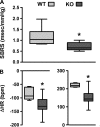ACE2/ANG-(1-7)/Mas pathway in the brain: the axis of good
- PMID: 21178125
- PMCID: PMC3075080
- DOI: 10.1152/ajpregu.00222.2010
ACE2/ANG-(1-7)/Mas pathway in the brain: the axis of good
Abstract
The last decade has seen the discovery of several new components of the renin-angiotensin system (RAS). Among them, angiotensin converting enzyme-2 (ACE2) and the Mas receptor have forced a reevaluation of the original cascade and led to the emergence of a new arm of the RAS: the ACE2/ANG-(1-7)/Mas axis. Accordingly, the new system is now seen as a balance between a provasoconstrictor, profibrotic, progrowth axis (ACE/ANG-II/AT(1) receptor) and a provasodilatory, antifibrotic, antigrowth arm (ACE2/ANG-(1-7)/Mas receptor). Already, this simplistic vision is evolving and new components are branching out upstream [ANG-(1-12) and (pro)renin receptor] and downstream (angiotensin-IV and other angiotensin peptides) of the classical cascade. In this review, we will summarize the role of the ACE2/ANG-(1-7)/Mas receptor, focusing on the central nervous system with respect to cardiovascular diseases such as hypertension, chronic heart failure, and stroke, as well as neurological diseases. In addition, we will discuss the new pharmacological (antagonists, agonists, activators) and genomic (knockout and transgenic animals) tools that are currently available. Finally, we will review the latest data regarding the various signaling pathways downstream of the Mas receptor.
Figures



Similar articles
-
Physical Exercise and ACE2-Angiotensin-(1-7)-Mas Receptor Axis of the Renin Angiotensin System.Protein Pept Lett. 2017 Nov 17;24(9):809-816. doi: 10.2174/0929866524666170728151401. Protein Pept Lett. 2017. PMID: 28758593 Review.
-
[Effects of ACE2-Ang 1-7-Mas axis on blood vessel].Sheng Li Ke Xue Jin Zhan. 2007 Jan;38(1):43-8. Sheng Li Ke Xue Jin Zhan. 2007. PMID: 17438952 Review. Chinese.
-
Opportunities for targeting the angiotensin-converting enzyme 2/angiotensin-(1-7)/mas receptor pathway in hypertension.Curr Hypertens Rep. 2013 Feb;15(1):31-8. doi: 10.1007/s11906-012-0324-1. Curr Hypertens Rep. 2013. PMID: 23212695 Review.
-
ACE2: more of Ang-(1-7) or less Ang II?Curr Opin Nephrol Hypertens. 2011 Jan;20(1):1-6. doi: 10.1097/MNH.0b013e3283406f57. Curr Opin Nephrol Hypertens. 2011. PMID: 21045683 Free PMC article. Review.
-
Angiotensin-(1-7): beyond the cardio-renal actions.Clin Sci (Lond). 2013 Apr;124(7):443-56. doi: 10.1042/CS20120461. Clin Sci (Lond). 2013. PMID: 23249272 Review.
Cited by
-
Interactions of the Brain Renin-Angiotensin-System (RAS) and Inflammation in the Sensitization of Hypertension.Front Neurosci. 2020 Jul 15;14:650. doi: 10.3389/fnins.2020.00650. eCollection 2020. Front Neurosci. 2020. PMID: 32760236 Free PMC article. Review.
-
Increased vascular sympathetic modulation in mice with Mas receptor deficiency.J Renin Angiotensin Aldosterone Syst. 2016 Apr 13;17(2):1470320316643643. doi: 10.1177/1470320316643643. Print 2016 Apr-Jun. J Renin Angiotensin Aldosterone Syst. 2016. PMID: 27080540 Free PMC article.
-
The compensatory renin-angiotensin system in the central regulation of arterial pressure: new avenues and new challenges.Ther Adv Cardiovasc Dis. 2015 Aug;9(4):201-8. doi: 10.1177/1753944715578056. Epub 2015 Mar 23. Ther Adv Cardiovasc Dis. 2015. PMID: 25801471 Free PMC article. Review.
-
The Renin Angiotensin System as a Therapeutic Target in Traumatic Brain Injury.Neurotherapeutics. 2023 Oct;20(6):1565-1591. doi: 10.1007/s13311-023-01435-8. Epub 2023 Sep 27. Neurotherapeutics. 2023. PMID: 37759139 Free PMC article. Review.
-
Angiotensin converting enzyme 2/Ang-(1-7)/mas axis protects brain from ischemic injury with a tendency of age-dependence.CNS Neurosci Ther. 2014 May;20(5):452-9. doi: 10.1111/cns.12233. Epub 2014 Mar 2. CNS Neurosci Ther. 2014. PMID: 24581232 Free PMC article.
References
-
- Abbas A, Gorelik G, Carbini LA, Scicli AG. Angiotensin-(1–7) induces bradykinin-mediated hypotensive responses in anesthetized rats. Hypertension 30: 217–221, 1997 - PubMed
-
- Allred AJ, Diz DI, Ferrario CM, Chappell MC. Pathways for angiotensin-(1–7) metabolism in pulmonary and renal tissues. Am J Physiol Renal Physiol 279: F841–F850, 2000 - PubMed
-
- Alzamora AC, Santos RAS, Campagnole-Santos MJ. Hypotensive effect of ANG II and ANG-(1–7) at the caudal ventrolateral medulla involves different mechanisms. Am J Physiol Regul Integr Comp Physiol 283: R1187–R1195, 2002 - PubMed
-
- Ambuhl P, Felix D, Khosla MC. [7-d-ALA]-angiotensin-(1–7): selective antagonism of angiotensin-(1–7) in the rat paraventricular nucleus. Brain Res Bull 35: 289–291, 1994 - PubMed
-
- Bechir M, Enseleit F, Chenevard R, Muntwyler J, Luscher TF, Noll G. Folic acid improves baroreceptor sensitivity in hypertension. J Cardiovasc Pharm 45: 44–48, 2005 - PubMed
Publication types
MeSH terms
Substances
Grants and funding
LinkOut - more resources
Full Text Sources
Other Literature Sources
Molecular Biology Databases
Miscellaneous

